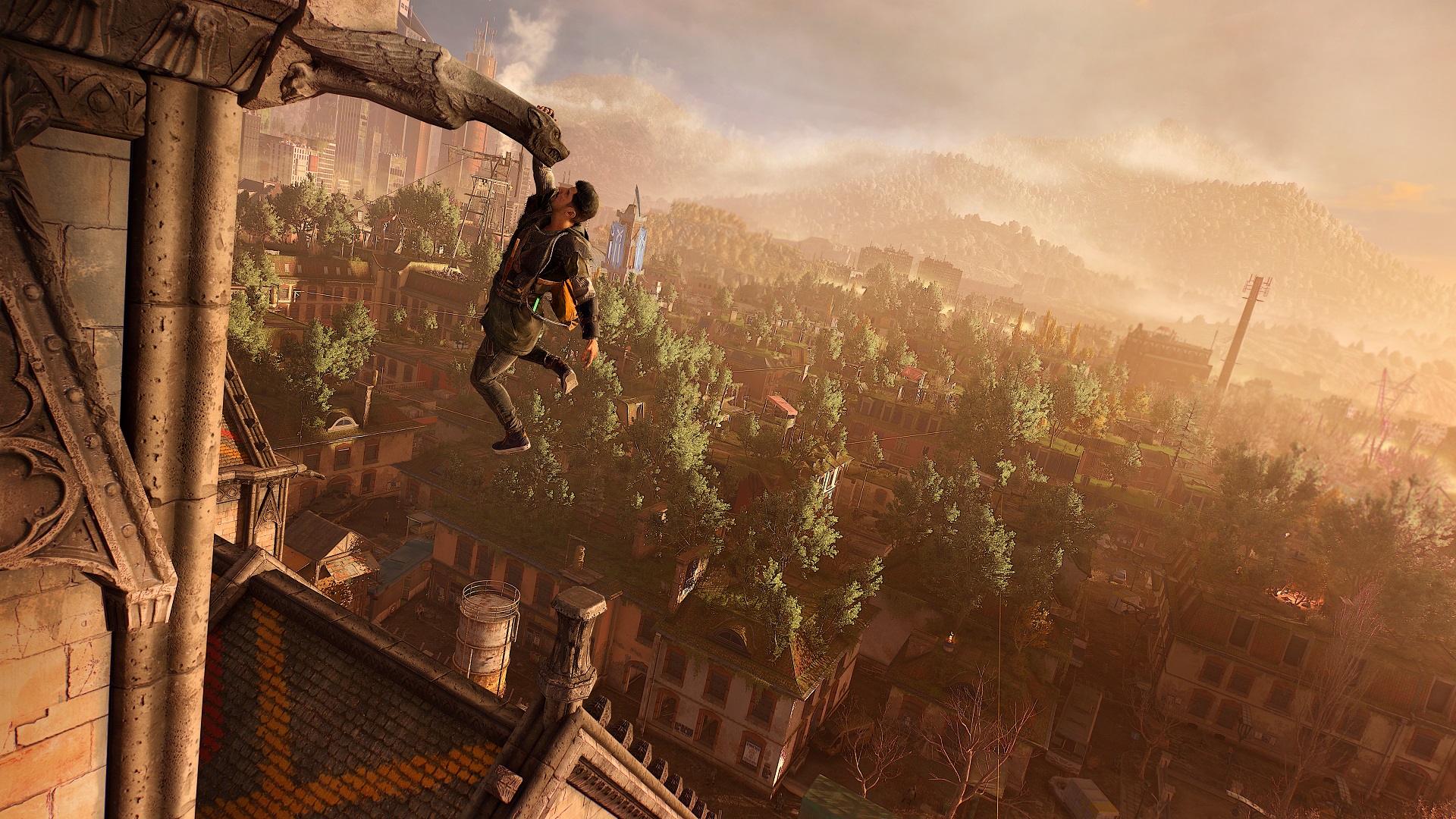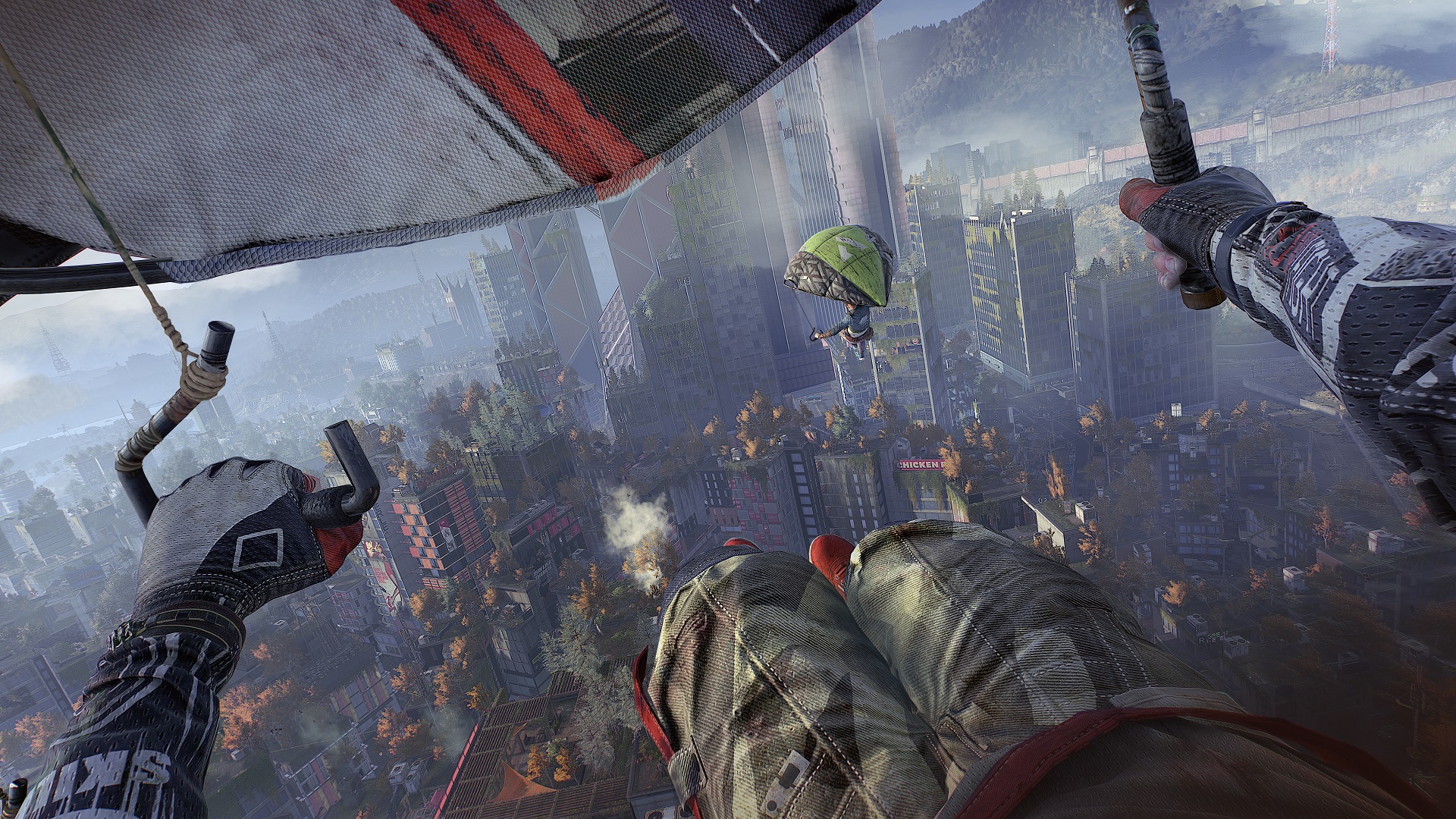Dying Light 2 Stay Human: What you need to know before you play
Prepare for the zombie apocalypse with this Dying Light 2 primer

Originally scheduled to launch in 2020, Dying Light 2 Stay Human underwent multiple delays, ultimately – and arguably – making it 2022's first major game release. With the open-world, zombie-slaying sequel beating heavy hitters such as Horizon Forbidden West and Elden Ring to the punch, you might consider taking look at Techland's take on surviving the undead apocalypse.
If you skipped 2015's Dying Light, you may be wondering what you should know about the original game before braving its monster-infested follow-up. In terms of story, you're in luck. The sequel, while not an entirely standalone experience, represents a mostly fresh start for the series’ narrative. Stay Human introduces a brand-new timeline, setting and protagonist. While the two games take place within a shared universe, Dying Light 2 also serves as a great starting point.
DL2’s gameplay, on the other hand, relies heavily on what came before, including a strong focus on melee combat and first-person parkour. While the sequel retains many of the mechanics and systems that defined Dying Light, however, it has also significantly refined and evolved them.
Whether you're a newcomer wondering what to expect or a lapsed fan looking for a refresher, we've got you covered with a primer that should fully prepare you for Dying Light 2.
Dying Light: Gameplay basics

When Dying Light launched seven years ago, it was far from the only game that let players slaughter zombies and survive the post-apocalypse. But while its brain-craving antagonists and dilapidated settings were familiar, Dying Light’s clever gameplay generally allowed it to stand apart from the shuffling pack.
Foregoing the usual arsenal of firearms and explosives in favor of an inventive assortment of melee weapons, Dying Light focused on visceral, up-close combat. This resulted in the sort of gory, in-your-face encounters that shooting foes from afar just can’t match.
Techland complemented the ability to brutally carve up zombies, from brain-stem to bellybutton, with a crafting system that encouraged creativity. By gathering resources and collecting blueprints, players could fashion upgrades that leveraged fire, electricity, poison and other life-siphoning effects to deliver maximum damage.
Get instant access to breaking news, the hottest reviews, great deals and helpful tips.
Beyond the focus on melee combat, Dying Light stood out for its novel take on navigation. The game’s open world was essentially a playground, built around a fluid first-person parkour system. You could walk the city's streets, but it was far more fun — and safe — to stick to higher ground, traversing rooftops, balconies and anything else out of harm's way, using an arsenal of acrobatic skills.
The parkour abilities, along with your combat and survival skills, were also continually evolving via skill trees. The RPG progression system, broken into Power, Agility and Survivor categories, allowed you to invest experience points into your preferred upgrades and unlocks. These included a number of passive perks and buffs, as well as some more significant options, such as a grappling hook, or a death-dealing combat move.
Beyond Dying Light's most defining elements – many of which Techland had previously toyed with in 2011's Dead Island – it also featured some other notable mechanics. The game utilized a day/night cycle, which saw its ugly enemies become stronger and more aggressive after dark. There was also a deep system for crafting deadly traps. Players could also utilize UV light to stun powerful foes, such as the night-stalking Volatiles.
Dying Light: The story so far

Dying Light put players in the boots of protagonist Kyle Crane. At the beginning of the game, Crane is an underground operative for the Global Relief Effort (GRE), a seemingly humanitarian branch of the government's Ministry of Defense. The GRE drops Crane into the fictional Middle Eastern-inspired city of Harran, which contains two sprawling areas: the Slums and Old Town. Of course, both are under attack by a virus that's turned most of its citizens into flesh-eating monsters.
From there, Crane must recover some sensitive intel, but it's not long before an infected foe bites him, shifting his priorities considerably. Much of the plot revolves around Antizen, a powerful drug that doesn't cure the virus, but keeps its worst symptoms at bay. Crane spends his time helping the Runners, a group of survivors who have found relative safety in a building dubbed “The Tower.” This also serves as a sort of home-base for players. The Runners are the game's “good guys,” helping others survive and always hunting for Antizen.
Apart from the infected, Crane and his newfound friends also fight warlord Rais and his army of thugs. On top of serving as Dying Light's primary human baddie, Rais also takes part in many of the story’s unexpected twists and conspiracies. By the game's conclusion, Crane and his remaining friends face the ruthless leader in a number of set-piece battles. There's an especially memorable encounter in an arena full of zombies, as well as a final confrontation that sees Rais fall to his death from atop a skyscraper.
Dying Light's narrative runs deeper than just Crane and the Runners taking on Rais and his goons though. Without getting too deep into the weeds, we'll say that the government — especially GRE — are not who they first appear to be. In fact, rather than seeking a cure for the infection, the shady organization has plans to weaponize it. There’s even a plot to bomb Harran to contain the virus and cover up GRE’s nefarious deeds, as well as that tiny detail concerning Crane's employment.
In the end, Crane sides with the survivors, even refusing extraction by the GRE in favor of staying behind to help Harran's struggling populace. He also refuses to give GRE valuable data on the virus, instead handing it over to a local doctor who’s working on a cure.
While Dying Light's ending isn't happy, it is hopeful. That's not the case, however, with its DLC, The Following, which brings Crane's story to one of two devastating conclusions. By the end of the expansion, Crane either transforms into a full-on infected, or launches a Harran-obliterating warhead.
Dying Light 2 Stay Human: What to expect

In terms of gameplay, Dying Light 2 has largely adopted an if-it-ain’t-broke-don't-fix-it approach. Once again, players drop into a large open world, where hordes of undead wait to turn them into lunch. Navigation is again parkour-based, while fighting is heavily melee-focused. Toss in a mix of RPG elements, survival/horror scares, and plenty of gore-soaked action, and the sequel should feel like home to existing fans of the series.
While Stay Human has smartly retained what worked the first time around, it's also polished and evolved those aspects, while adding plenty of original features. For starters, fans can plan on exploring a significantly larger, more diverse post-apocalyptic world. Additionally, players can acquire new gear, including a para-glider, as well as new acrobatic skills.
A fresh focus on player-driven choices will fuel a more malleable narrative path, leading to both immediate and far-reaching consequences. Players will also spend more time working with — and against — different factions, as well as employing stealth to complete missions that might otherwise end with their spines being used as dental floss.
While Techland hasn't been shy about sharing gameplay details, it's guarded story details as if they were the last remaining vials of Antigen. We know the sequel picks up 20 years after Kyle Crane's tale, in a new European setting dubbed “The City.” It also introduces brand-new protagonist, Aiden Caldwell, as well as a mysterious survivor played by Rosario Dawson. Beyond all that, Dying Light 2's setting, story, and characters are largely under wraps.
Thankfully, we don't have to wait much longer to dig into the game’s secrets, mysteries, and surprises. Dying Light 2 will be out for PlayStation, Xbox, Switch and PC on February 4.

Matt is a US-based freelance writer and consultant and has been covering movies, TV shows and video games for over a decade. His work has appeared on IGN, Stuff, Rotten Tomatoes and Variety. As well as reporting on the latest in entertainment, Matt can sometimes be found spotting the latest tech deals for Tom's Guide.
When he's not writing, gaming or bingeing the latest shows, you'll find him in the basement of an abandoned building hoarding all the canned goods, med-kits, and shotgun shells.
